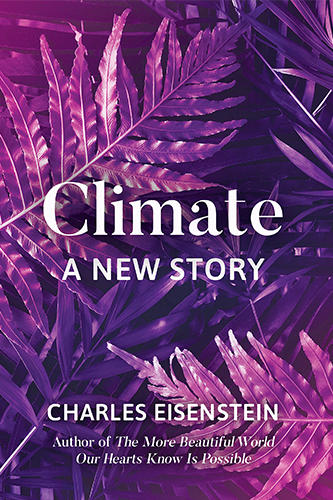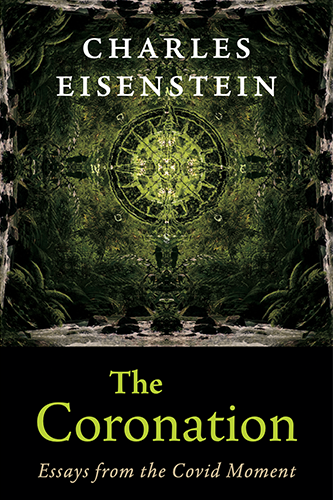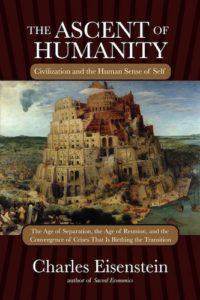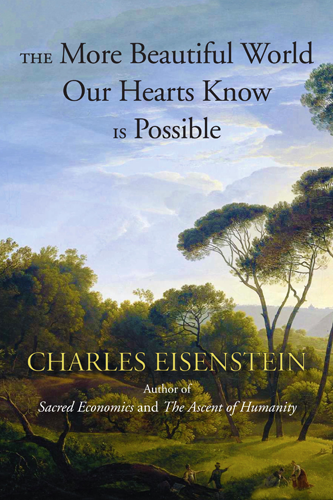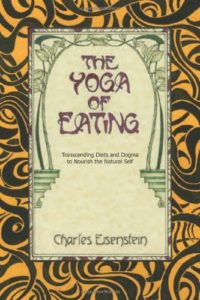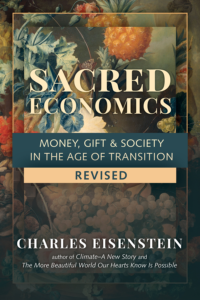The Ascent of Humanity
Chapters
Chapter 5: The World Under Control
Molding Minds
School is the cheapest police.
— Horace Mann
But who can unlearn all the facts that I’ve learned
As I sat in their chairs and my synapses burned
And the torture of chalk dust collects on my tongue
Thoughts follow my vision and dance in the sun
All my vasoconstrictors they come slowly undone
Can’t this wait till I’m old? Can’t I live while I’m young?
— Phish
No discussion of control would be complete without some attention to modern schooling, the linchpin of the program to subjugate the inner wilderness—human nature—just as we use technology to dominate the outer.
Why do we go to school? The universal response is, “To learn”, and here we encounter the primary contradiction of modern schooling that leads us to all the others. For if the purpose of school is that children may learn, then school is quite evidently not working.
The massive National Adult Literacy Survey undertaken by the Department of Education in 1992 is especially revealing, so I will quote John Gatto’s summary in full:
- Forty-two million [out of 190 million adult] Americans over the age of sixteen can’t read. Some of this group can write their names on Social Security cards and fill in height, weight, and birth spaces on application forms.
- Fifty million can recognize printed words on a fourth- and fifth-grade level. They cannot write simple messages or letters.
- Fifty-five to sixty million are limited to sixth-, seventh-, and eighth-grade reading. A majority of this group could not figure out the price per ounce of peanut butter in a 20-ounce jar costing $1.99 when told they could round the answer off to a whole number.
- Thirty million have ninth- and tenth-grade reading proficiency. This group (and all preceding) cannot understand a simplified written explanation of the procedures used by attorneys and judges in selecting juries.
- About 3.5 percent of the 26,000-member sample demonstrated literacy skills adequate to do traditional college study, a level 30 percent of all U.S. high school students reached in 1940, and which 30 percent of secondary students in other developed countries can reach today.
Well, maybe it can’t be helped, maybe most people are just dumb. In that case school takes on a benevolent, even a noble aspect, using the sciences of psychology and pedagogy to bring at least a glimmering of knowledge and literacy to the benighted masses, who if left to their own devices and the well-meaning ignorance of their parents would surely be unfit for life in technological society. After all, unlike two hundred years ago, we have to read now, do math. . . use computers. Sure it has some problems, but in general school brings each person up to the level of intellectual competency that their genes and environment allow. Right?
Wrong. Over the last 60 years, while real spending on education nearly quadrupled, illiteracy has quadrupled along with it. Few blacks went to school before 1940, yet in that year black literacy was 80%; today it hovers around 60%. White illiteracy meanwhile rose from 4% to 17%. [24]
Before forced schooling, in 1840, literacy rates in New England approached 100 percent, and the popular best-sellers of the time included books the likes of Herman Melville, James Fenimore Cooper, and Ralph Waldo Emerson—all bought by a population consisting mostly of small farmers. Have you ever sat yourself down for a relaxing afternoon with a little leisurely reading—a thirty-page long Emerson essay loaded with Greek mythological allusions, complex sentences with multiple nested appositive phrases and dependent clauses, intricate logic, and a vocabulary that would challenge most graduate students today? I find I can only access early 19th century literature with a great effort at concentration. My attention wanders, I lose the train of the argument, and soon find myself passing my eyeballs over the page, uncomprehendingly.
John Taylor Gatto observes: “In 1882, fifth graders read these authors in their Appleton School Reader: William Shakespeare, Henry Thoreau, George Washington, Sir Walter Scott, Mark Twain, Benjamin Franklin, Oliver Wendell Holmes, John Bunyan, Daniel Webster, Samuel Johnson, Lewis Carroll, Thomas Jefferson, Ralph Waldo Emerson, and others like them.” Today, no more than twenty percent of my college students understand the Thomas Jefferson passage quoted in Chapter Four of this book. As for fifth graders, their texts consist mostly of short declarative sentences using simplified vocabulary. A recent trend is the reissue of children’s classics such as Little Women or The Wind in the Willows in special dumbed-down editions.[25] Few children these days have the reading ability to handle Treasure Island, and Shakespeare’s Julius Caesar, once a staple of high school English, is off the curriculum because children no longer have the attention spans to understand it.[26]
Modern schooling is a failure—or is it? That depends on the real purpose of schooling, an enormous topic that I cannot possible do justice to in these pages. Fortunately I don’t have to, thanks to John Taylor Gatto’s magnificent opus The Underground History of American Education, a work of prodigious scholarship, unflinching honesty, seasoned insight, and towering indignation. I will share some of his insights (and his indignation), since they illustrate so well the mentality of control, the logic of the Newtonian World-machine, the liquidation of spiritual capital, and ultimately our culture’s fundamental attitudes towards nature and human nature.
Just beneath the superficial justifications for mass forced schooling lies the first level of its true motivation: to create a population suitable for the demands of the industrial economy. (That we are supposedly in a post-industrial economy today is part of the reason why school is admitted even by the elites to be “not working anymore”.) School as we know it, like other applications of the technologies and mentalities of mass production, got its start in the early 19th century in the great coal powers of the period: Prussia, England, France, and then the United States.
Early industry faced a problem. Mine and factory work was dull, repetitive, arduous, and dangerous while offering wages barely high enough to sustain life. Office work—the work of clerks, scriveners, and accountants before computers—was equally dull and dehumanizing, if not so dangerous. Factory discipline was alien to the independent, self-directed farmers and artisans that made up pre-industrial society, and the question of how to instill labor discipline was discussed at length by the intellectuals of the day. One solution was outright force: the driving of peasants off the land through enclosure, the use of militias to enforce strike prohibitions, and mostly the motive of extreme economy exigency. However, the inhumanity of this solution offended the conscience and besides, it was potentially very explosive as a series of insurrections, revolutions, and bloody labor strikes throughout Europe and North America attested. Wouldn’t it be better to somehow condition people from childhood to accept, and even to desire, work that was partial, trivial, mechanical, dull, repetitive, and unchallenging to thought or creativity?
Is this description already reminding you of school? Where learning arises not from curiosity but from authority’s agenda; where achievement is adjudged by external standards; where human beings, like so many objects, are numbered, “class”ified, and “graded”; where knowledge is reduced to answers, right and wrong; where children are confined to a classroom or desk except when authority allows them “recess” or a pass; where problems are solved by following teacher’s instructions; where free speech and free assembly are suspended—where, indeed, there are no freedoms at all but only privileges; where bells condition us to follow a regular external schedule; where fraternization is surreptitious (as my teacher once said, “You are not here to socialize!”); where none outside the hierarchical structure of authority have the power to make or change rules; where we must accept the tasks given us; where work is arbitrary and meaningless except for what external reward it brings; where resistance is proved futile in the face of a near-omniscient, omnipotent central authority. . . what better preparation for adult confinement to offices and factories could there be? What better preparation for accepting unquestioningly the lives given us? Where else can students “learn to think of themselves as employees competing for the favors of management”?[27]
Not only does school prepare us to submit to the trivialized, demeaning, dull, and unfulfilling jobs that dominate our economy to the present time, not only does it prepare us to be modern producers, it equally prepares us to be modern consumers. Consider Gatto’s description:
Schools train individuals to respond as a mass. Boys and girls are drilled in being bored, frightened, envious, emotionally needy, generally incomplete. A successful mass production economy requires such a clientele. A small business, small farm economy like that of the Amish requires individual competence, thoughtfulness, compassion, and universal participation; our own requires a managed mass of leveled, spiritless, anxious, familyless, friendless, godless, and obedient people who believe the difference between “Cheers” and “Seinfeld” is worth arguing about.
The consumer model is written into the very foundations of the modern classroom. Gatto writes: “Schools build national wealth by tearing down personal sovereignty, morality, and family life.” These things are precisely the social and spiritual capital whose conversion into money was discussed in Chapter Four. It is not just that the broken and stupefied child is unable to stand up for himself in the workplace or to resist his role as a standardized cog in the vast automaton of industrial society; it is that relationships themselves, and all the previously non-monetized functions and exchanges associated with them, have been objectified, depersonalized, and commoditized. When the autonomous relationships (social and spiritual) that define our humanity are stripped away, we naturally becomes consumers of them. When self-directed learning through reading is replaced by programmed teacher instruction—the dishing out of a curriculum—we become consumers and not producers of knowledge, which is reduced to measurable “information”. Thus we instill in our children not only obedience—tell me what to do—but also intellectual dependency, the reliance on authority for truth. What is the difference between getting truth from books and getting truth from teacher? Reading books as part of a personal search for knowledge does not make one a mere consumer, because the search is self-directed and the information subject to independent, uncoerced selection and judgment. In school quite the opposite holds: the truth—the right answers—has already been pre-selected and pre-judged by the authorities, and the students are to accept it—are coerced into accepting it (at least to the extent that exams, grades, detentions, “permanent records” and so on are effective instruments of reward and punishment).
In other words, school is an instrument of alienation. It alienates children from their families, not only by removing them physically but by replacing and professionalizing a traditionally important sphere of interaction: education. It alienates children from communities, segregating them by age, inducing competition among them, isolating them from adult life, and feeding them a curriculum determined by distant experts. (The community-breaking function of school is especially strong after 100 years of school consolidation and state-sponsored standardization of curricula). It alienates children from nature and the outdoors, of course, simply by keeping them inside all day—surely an unprecedented condition of childhood until the last century. It alienates children from real experience by substituting for it games, simulations, and lessons, in which everything they do is, after all, only in a classroom, without real consequences, and terminating as soon as the bell rings for the next class. But most importantly, school alienates children from themselves: their own natural curiosity, inner motivation, self-reliance, and self-confidence. As Ivan Illich puts it, “Rich and poor alike depend on schools and hospitals which guide their lives, form their world view, and define for them what it legitimate and what is not. Both view doctoring oneself as irresponsible, learning on one’s own as unreliable, and community organization, when not paid for by those in authority, as a form of aggression or subversion. For both groups the reliance on institutional treatment renders independent accomplishment suspect.”[28]
William Torrey Harris, U.S. Commissioner of Education from 1889 to 1906, wrote in the last year of his tenure:
Ninety-nine [students] out of a hundred are automata, careful to walk in prescribed paths, careful to follow the prescribed custom. This is not an accident but the result of substantial education, which, scientifically defined, is the subsumption of the individual.
The great purpose of school can be realized better in dark, airless, ugly places. . . . It is to master the physical self, to transcend the beauty of nature. School should develop the power to withdraw from the external world.[29]
Gatto comments, “Nearly a hundred years ago, this schoolman thought self-alienation was the secret to industrial society. Surely he was right.” This alienation is nothing else than the separation that is the theme of this book, implicit in all technology and culminating in the pinnacle of modern science, technology, and the Machine.
These features of schooling were designed into it from the very beginning, as stated very explicitly by such guiding organizations as Rockefeller’s General Education Board:
In our dreams. . . people yield themselves with perfect docility to our molding hands. . . . We shall not try to make these people or any of their children into philosophers or men of learning or men of science. We have not to raise up from among them authors, educators, poets, or men of letters. We shall not search for embryo great artists, painters, musicians, nor lawyers, doctors, preachers, politicians, statesmen, of whom we have ample supply. The task we set before ourselves is very simple. . . we will organize children . . . and teach them to do in a perfect way the things their fathers and mothers are doing in an imperfect way.[30]
“A mass-production economy can neither be created nor sustained without a leveled population, one conditioned to mass habits, mass tastes, mass enthusiasms, predictable mass behavior.”[31] The modern institution of school helps create the very “human nature” that is assumed in liberal economic theory, whose behavior is predictable according to deterministic laws just as are the masses of classical physics.
On a deeper level, the goal of modern education is the perfection of Lewis Mumford’s megamachine—the great automaton composed of human parts—that itself provided the original model for the factory, and in which each person is reduced like a machine component to a standardized function. Just as physical machines produced unprecedented wealth and power over the environment, so it was also supposed that the sacrifices made of individual wholeness and self-determination would find compensation in the glorious onward march of science, the eventual conquest of nature, the fulfillment, in other words, of the Technological Program that would take us beyond labor, beyond suffering, beyond death, beyond planet earth across the Final Frontier of space.
The subordination of the individual to the needs of system is a key component of the ideology of “scientific management”, associated with Frederick Taylor but tracing its roots back at least to Francis Bacon. Bacon believed that with the Scientific Method humanity had arrived at just that, a “method” that could be mechanically applied to achieve unlimited progress in science. No longer would individual genius be required, just the competent and correct application of method. John Raulston Saul eloquently describes the evolution of the ideology of reason, method, and system in his magnificent Voltaire’s Bastards. As Taylor put it, “In the past, man has been first. In the future the system must be first.” Gatto comments, “It was not sufficient to have physical movements standardized, the standardized worker ‘must be happy in his work,’ too, therefore his thought processes also must be standardized.”[32] If you aren’t happy in your work, that must imply a fault in your production process (socialization, education, training); fortunately, that can be adjusted with pharmaceutical technology. Indeed, the term “well-adjusted” implies the molding of the human being, a standardizing to the needs of system. Again the 1933 World’s Fair slogan comes to mind: “Science Finds. Industry Applies. Man Conforms.” School is simply part of the process of conforming man to machine, the engineering of human nature.
While correctly and compellingly identifying the true historical objectives of schooling as comprising a monstrous violation of the human spirit, Gatto sometimes leaves the impression that it was contingent on a few historical accidents and could easily have been otherwise. If only Humbolt had won the debate with Baron Vom Stein in early 19th-century Prussia, if only the Massachusetts legislature had swung by a mere 36 votes to reject Horace Mann, then the crime of mass compulsory schooling might never have happened. In fact, it was bound to happen, bound by vast historical processes that carried Vom Stein, Mann, Dewey, the Carnegie Foundation and Rockefeller Board, William Rainey Harper and the rest to victory. Even the behind-the-scenes manipulators—Rockefeller, Carnegie, Ford, and Morgan—who sought the creation of a docile proletariat and orderly society were themselves merely enacting roles dictated by the very processes that brought them to power.
Yes, school is an agent in the dissolution of family and community, in the conversion of citizens into subjects and creators into consumers, in the breaking of children to the demands of institutional life; school is an agent in all this, but these processes extend far beyond the institution of schooling to embed it and guide it. It was inevitable that one way or another, we would apply the same essential technologies to children as we did onto nature and everything else—and for the same basic reasons. How to “subordinate the individual to the needs of the system”? The individual must simply be made labeled, quantified, measured, graded, and standardized. That is the only way the methods of management can be applied. School is thus an outgrowth of the Mumfordian megamachine, which itself is the logical endpoint of the progressive objectification, management, and control of nature.
In taking children away from the matrix of family, nature, and social apprenticeship, mass schooling is essentially an enormous experiment in social engineering, the fruition of thousands of years of utopianism going back to Plato in which institutional training of the young was always a crucial component. Up through the Owenite and socialist experiments of the 19th and 20th centuries, children were removed, at least in part, from their families. Sorry, but the family is obsolete: henceforward we are going to raise children scientifically. Surely trained experts can do better than ignorant parents, surely science and reason can improve upon primitive, biological, emotion-driven families. The scientific laws of psychology and child behavior will replace the old irrational customs, and unclouded by parental subjectivity we will raise children for modern society. You, the modern parent, can do your best to learn about scientific parenting, but in most areas you’ll have to yield to the experts.
The terminus of this trend is nothing other than Huxley’s Brave New World, in which the factory method is applied to child-rearing from birth and before. All people are graded, from Alpha-plus to Delta-minus—sound familiar?—and each given the stimuli and resources appropriate to their grade.
Like all technology, the social engineering agenda of schooling involves a separation from nature, in this case the removal of children from their original biological and social habitat of family and community. The separation from the family, totalized in Brave New World, is a necessary, inevitable product of the attempt to engineer society according to the same methods and logic as we engineer the material world. In both there is a replacement of the personal, subjective, and traditional with the abstract, formal, and general. We have not yet reached Huxley’s extreme, but a trend in that direction is visible wherever the Technological Program is pursued. When I was a child we listened with horror to stories of the Soviet Union, where the state was replacing the parent, replacing the very family, with mandatory “scientific” child care, youth indoctrination, and so forth. But today the same thing is happening everywhere, if not directly at the hands of the state, then with its literal license, or else at the hands of other institutions operating by the usual principles of scientific management. Whether by chance or design, today’s system of infant and child care, school, organized sports, counseling, and television conspires to replace the parent and community. The same functions of socialization, education, and identity-building are being provided, but now by institutions and their functionaries who may not really care about your child at all, except that they are paid to. Moreover, there is a fundamental conflict between the social engineer’s goal of adjusting the child to fit the needs of the system, and the spiritual goal of personal fulfillment. The socialization is socialization to the machine. The identity built is the identity of a consumer.
The agenda of social engineering explains the emphasis that psychology—the “science” of the mind—has always received in pedagogy (the “science” of teaching) ever since Horace Mann advocated phrenology as the key to a successful classroom. As in other realms of humanity’s “ascent”, we follow Galileo’s prescription of applying measurement to learning in hopes of turning it into a science. We can then deploy the whole gamut of technologies based on standardization, efficiency, management, and control. The object of education—the child—becomes the object of technology. School is an aspect of a vast enterprise: the engineering of the human being, the human mind, the human psyche, the human soul. An audacious ambition indeed: not the accidental result of an historical blunder, nor the plot of an evil conspiracy, but implicit in the original audacity of technology. On the deepest level, the purpose and motivation of education is to apply the Technological Program to the ultimate frontier: society and the human being. As technology in general seeks to improve on nature, educational technology seeks to improve on human nature.
[24]John Taylor Gatto, The Underground History of American Education, p. 53.
[25] For an insightful discussion of this trend, see “Abridged too Far”, Hillary Flower http://www.salon.com/books/feature/2004/03/29/willows/index.html.
[26] Harold Bloom, The Western Canon, p. 520
[27]Gatto, p. 38
[28] Ivan Illich, Deschooling Society, p. 2-3
[29] William Torrey Harris, The Philosophy of Education, quoted by Gatto p. 105
[30] General Education Board, Occasional Letter Number One, 1906, quoted by Gatto p. 45
[31] Gatto, p. 156
[32] Gatto, p. 173

